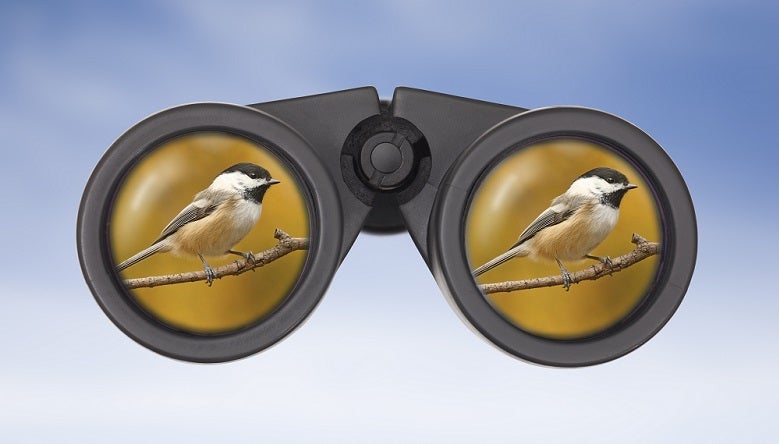
Our Editors independently research, test, and rate what we feel are the best products. We use affiliate links and may receive a small commission on purchases.
Bird watching is one of the most popular recreational outdoor activities that can be enjoyed anywhere.
More than 50 million people in the United States are birders, and birding is even seeing a resurgence among younger generations with the arrival of smartphone apps to help spot and identify birds.
Birdwatchers come from all walks of life and people of all ages can enjoy this convenient, relaxing and inexpensive hobby.
All you need to get started is a pair of the best bird watching binoculars and a field guide.
Best Binoculars For Bird Watching
For more of my gear recommendations, have a look through these popular Outside Pursuits guide links: Bird Photography Cameras, Camera Backpacks, Solar Chargers, Bird Feeders.
Quick Answer: The 5 Best Rated Birding Binoculars For 2021
- Zeiss Victory HT Binoculars – (Over $1,000)
- Zeiss Conquest HD Binoculars – (Under $1,000)
- Vortex Optics Viper HD Binoculars – (Under $500)
- Eschenbach Sektor D Binoculars – (Under $300)
- Celestron – Nature DX Binoculars – (Under $100)
Our reviews of the top-rated birding binoculars with our comparison table and buyers guide will help you choose the right binoculars for you.
Bird Watching Binoculars Reviews
We have reviewed a total of 14 binoculars in all price ranges, from over $1,000 to $50 so there is something for everyone no matter what your budget is.
Best Bird Watching Binoculars Over $1,000
#1 Zeiss Victory HT Binoculars
- Size & Weight: 5” x 10” x 7.5”, 4.06 lbs
- Optics: 10x54, Abbe König roof prisms, Schott HT fluoride glass
- FOV: Apparent 65°, 330ft@1000yds
- Exit Pupil / Eye Relief: 5.3mm / 16mm
- Close Focus: 1.9m / 6.23’’
- Extras: 500 mbar water resistance, Nitrogen-filled fogproof & waterproof, fully multi-coated T optics, magnesium alloy chassis, click-stop eyecups, impact-resistant
The Zeiss Victory HT birdwatching binoculars are a premium model with outstanding optical properties. They feature a light transmission of around 95% for a spectacularly bright and sharp image rich in contrast and natural color.
Even in difficult light conditions, flares are minimal and these binoculars perform incredibly well in deep twilight. Thanks to cutting-edge optics, this is one of the brightest models.
The HT stands for high transmission, and the Zeiss Victory binoculars achieve a light transmission of 95% with high-quality optics of Abbe König roof prisms and Schott lenses.
Optically, the Victory’s are as close to perfect as you can get with a 10x magnification power and 42mm objective lenses. The multi-coating of the lenses improves resolution and eliminates glare, while Fluoride doping improves color and improves brightness.
With the additional LotuTec protective coating, the lenses repel water droplets, improve visibility and allow trace-less cleaning.
The binoculars feature a neutral, vivid color representation with deep saturation. Contrast is impressive with outstanding clarity and sharpness with an expected gentle decrease towards the edges.
The resolution is well-defined and flares or ghosting hardly occur. You get an image very little noise, which means the performance in woods or deep shadows under a bright sky is impressive. Even a light source in the frame hardly delivers any flare.
The apparent field of view is 62°, which results in 360 feet at 1,000 yards – a comfortably wide FOV, perfect for birders. For a roof prism design, the image is very three-dimensional.
With a close focus of just over 6 feet, observing species at close range is a delight with no blur or image softness.
Physically, the Zeiss Victory HT handles well and has some heft to it. The magnesium alloy body is very solid and the double hinge has sufficient resistance to prevent accidental movement.
Operation is intuitive and with a large large focus wheel and easy to adjust, even with gloves. The eyecups can be adjusted to four positions with three click-stops. A tripod adapter specifically for this model is available.
In summary, if you’re looking for the best bird watching binoculars, the Zeiss Victory HT is your pair of choice! They set the standard for 10x42 models with unmatched clear and bright images.
#2 Leica Ultravid HD Plus Binoculars
- Size & Weight: 4.9″ x 7.0″ x 2.8″, 35 oz
- Optics: 10x50, Roof prisms, Schott HT fluoride glass
- FOV: 352ft@1000yds
- Exit Pupil / Eye Relief: 4.2mm / 15mm
- Close Focus: 9.5′
- Extras: Fogproof & Watertight to 16.5′, die-cast magnesium body, Nitrogen-filled, fully multi-coated, eyepieces for eyeglasses, neoprene strap, carrying case
The Leica Ultravid HD Plus binoculars are a premium model with 10x magnification and high-quality optics for bright and clear images as well as a wide field of vision.
They perform well in low-light and can still be handled without a tripod despite the larger magnification.
Leica uses Schott HT lenses of a 50mm diameter with full multi-coating for enhanced light transmission and great color fidelity. Highly durable coating and hydrophobic
AquaDura coating protects from water, scratches and abrasion for clearer vision and easy cleaning. The roof prism design inside comes with a P40 phase-correction and high lux system coating for increased contrast and elimination of chromatic aberration.
With an apparent angle of 64°, the field of vision is extra-wide. Even if your hands are less steady, you can still comfortably spot birds.
What this means is that the Leica Ultravid HD Plus performs well at dawn and dusk, allowing you to make out full details in dim light. Sharpness is at a maximum and contrast is optimized. Flare is reduced to an absolute minimum.
The Leica Ultravid HD Plus is constructed from a magnesium alloy body, which is lightweight yet durable. The center hinge axle is made from titanium.
The optical tubes are fogproof and waterproof thanks to a Nitrogen filling, and the binoculars are watertight to a depth of 16.5 feet or 0.5 bar of pressure.
With a protective rubber armoring and ergonomic thumb indents on the underside, they are comfortable to hold in a slip-resistant, steady grip. The focus system is fast and precise and requires no lubrication.
With precise mechanisms and finest optics in a durable design, the Leica Ultravid HD Plus are some of the best binoculars for bird watching with exemplary performance even in tough conditions!
#3 Swarovski CL Companion Binocular
- Size & Weight: 5″ x 4.5″ x 2.2″, 17.6 oz
- Optics: 10x42, BAK4 roof prisms
- FOV: 6.2°, apparent 58°, 324ft@1000yds
- Exit Pupil / Eye Relief: 3mm / 14mm
- Close Focus: 9.8′
- Extras: Fogproof & waterproof to 13′, Nitrogen filling, fully multi-coated, adjustable twist-in eyecups, slip-resistant focusing wheel, rubber armoring, includes field bag + shoulder & wrist straps
The Swarovski Optik 58141 CL Companion is a pair of premium bird watching binoculars with compact dimensions and great value for the money thanks to quality optics.
The smaller objective lenses are paired with 10x magnification and enhanced optical coatings for high-contrast images and true colors.
This is a roof prism model using phase-corrected, barium crown prisms with a perfectly round exit pupil and bright image. This means there is virtually no distortion across the entire field of view.
The prism coating also eliminates color aberrations for optimum color rendition and best contrast. The anti-reflective multi-coating on the lenses enhances light transmission up to 90% and delivers an accurate view.
Another layer enhances scratch resistance. Water and oily liquids pearl off for easy cleaning and dust-free surfaces.
The bridge of the Swarovski Optik 58141 features thumb depressions on the underside, allowing you to hold them steady and balanced for comfort.
The trim form factor makes these binoculars ideal for travel and light packing. The green non-slip full rubber armor provides further shock resistance.
If needed, the barrels are far enough apart so you can grip them fully in cold and wet weather due to the larger gripping surface. The ergonomic profile also feature a non-slip focus wheel and adjustable twist-in eyecups, which make longer observation sessions less tiring.
The optical tubes are filled with Nitrogen for fogproof and waterproof binoculars up to a depth of 13 feet. This model comes with a standard field bag, straps for the shoulder or wrist, and two objective lens covers as well as an eyepiece rain guard.
The Swarovski Optik 58141 CL Companion are excellent lightweight travel-sized pair of birdwatching binoculars with powerful precision optics.
Best Bird Watching Binoculars Under $1,000
#4 Zeiss 10x42 Conquest HD Binoculars
- Size & Weight: 6.5″ x 4.7″, 28 oz
- Optics: 10x42, Schmidt-Pechan roof prisms, LotuTec coating
- FOV: 6.6°, apparent 66°, 364.5ft@1000yds
- Exit Pupil / Eye Relief: 4.2mm / 18mm
- Close Focus: 6.5′
- Extras: Fogproof & waterproof to 13′ & 400 mbar, Nitrogen filling, fully multi-coated, 90% light transmission, aluminum construction, twist-up eyecups
The Zeiss Conquest HD binoculars are a rugged birdwatching model with a steady image, even in twilight. With fully coated HD lenses, you get great color rendition and long observations free of eye fatigue. The wide field of vision is ideal for bird spotting.
These binoculars combine a large 42mm objective lens with a high magnifying power of 10x for great detail and focus on the subject.
The light gathering capability of the lens is paired with a LotuTec coating for improved transmission of 90%. You get Zeiss high-quality optics with multi-layer coating to reduce light loss and reduce glare.
The image features a high contrast with little to none chromatic aberration, meaning you won’t see color fringed where dark and bright parts touch.
The Zeiss Conquest HD is Nitrogen-filled for fog- and waterproofing up to 13 feet, preventing condensation inside. The lens coating facilitates cleaning and is resistant against scratches, dust and liquids.
The binoculars handle well with a large focusing wheel which gives you optimal grip and works well even with gloves on. With ergonomic features, compact size and lightweight, this pair is a great birding companion.
The twist-up eyecups work well with any glasses. With a low close focus and a wide field of view, you’ll be able to spot a lot and see great detail.
#5 Vortex Optics Razor HD 10x42 Roof Prism Binoculars
- Size & Weight: 5.9″ x 5.1″, 24.8 oz
- Optics: 10x42, roof prisms, phase correction
- FOV: 6.9°, 362ft@1000yds
- Exit Pupil / Eye Relief: 4.2mm / 16.5mm
- Close Focus: 6′
- Extras: Fogproof & waterproof, O-ring seals, Argon filling, fully multi-coated, ArmorTek coating, rubber armor, magnesium construction, includes: eyepiece rain guard + tethered lens cover + neck strap + carrying case
The Vortex Optics Razor HD is a high-performance pair of 10x42 birdwatching binoculars. They’re small, lightweight, and durable while delivering a bright and true image thanks to fully coated lenses and roof prisms.
The Vortex Optics Razor HD uses high density lenses for low dispersion and high resolution with true color fidelity. A proprietary process for full multi-coating delivers high levels of light transmission while reducing glare and reflections.
The roof prisms are durable and enable the compact size. They’re multi-coated as well for resolution, contrast, durability and performance.
The optical tubes are purged with Argon gas to prevent internal fogging. Waterproof O-rings keep out moisture, dust and dirt in all environments.
The ultra-hard ArmorTek coating protects the exterior lenses from scratches, smears and dirt. The construction features a magnesium chassis for lightweight durability. The rubber armor coating gives you a secure grip and additional protection.
The hinge handles ergonomically while keeping weight and bulk down. The center focus wheel adjusts smoothly in all circumstances.
The eyecups twist up and down for multiple positions, allowing you precise adjustments and comfortable viewing with or without glasses.
The Vortex Optics Razor HD birdwatching binoculars deliver a wide field of view with great magnification and high-quality optics for just below $1,000.
Best Bird Watching Binoculars Under $500
#6 Vortex Optics Viper HD Roof Prism Binoculars
- Size & Weight: 5.8″ x 5.3″, 24.6 oz
- Optics: 10x42, roof prisms, phase correction
- FOV: 6.1°, 319ft@1000yds
- Exit Pupil / Eye Relief: 4.2mm / 16.5mm
- Close Focus: 5.1′
- Extras: Fogproof & waterproof, O-ring seals, Argon filling, fully multi-coated, ArmorTek coating, rubber armor, neck strap + carrying case
The Vortex Optics Viper HD is a pair of 10x42 birding binoculars with a rugged, compact and lightweight design that features premium optics.
Compared to the higher-priced model above, the main difference is the number of coatings, resulting in a slightly narrower field of view.
However, that doesn’t mean this pair doesn’t shine: with 319 feet at 1,000 yards, the FOV is still very wide for binoculars with 10x magnifying power and 42mm objective lenses.
The close focus is as low as it can get with 5.1 feet! The high density lenses feature low dispersion for a great resolution and true colors, giving you sharp images.
The roof prisms are coated for resolution and contrast enhancement. Light transmission is good for a 10x42 pair, with multiple anti-reflective coatings.
Same as the Razor HD, this model is water- and fogproof thanks to Argon gas purging. O-ring seals keep out droplets, dust and dirt. The rubber armor gives you a safe, non-slip grip and the lenses have been hardened and coated as protection against scratches, dirt, and smudges.
The adjustable eyecups allow for viewing with glasses, and the binoculars handle ergonomically. The Viper HD includes a rain guard, a tethered lens cover, a neck strap and a deluxe carrying case.
The Vortex Optics Viper HD are the best birding binoculars under $500!
#7 Nikon 7549 10x42 MONARCH 7 Binoculars
- Size & Weight: 5.6″ x 5.1″, 23.6 oz
- Optics: 10x42, roof prisms, ED glass
- FOV: 6.7°, apparent 60.7°, 351ft@1000yds
- Exit Pupil / Eye Relief: 4.2mm /16.4mm
- Close Focus: 8.2′
- Extras: Fogproof & waterproof up to 3.3′, Nitrogen filling, fully multi-coated, rubber armor, rain guard, twist-up eyecups, ergonomic indents
The Nikon Monarch 7 birdwatching binoculars are for you if you’re looking for a 10x42 pair for a very reasonable price.
These rugged and ergonomic all-terrain binoculars feature high-performance optics with a wide field of view and great light transmission thanks to multi-coating.
With 8x magnifying power, you can still see things up close, but get great values for exit pupil and eye relief with a wide field of view.
The large 42mm lenses have excellent light-gathering capabilities, further enhanced by full multi-coating treatment for low-dispersion, anti-reflection lenses and outstanding light transmission.
The roof prisms uses are phase-corrected and coated for bright, high-contrast images with accurate colors. These binoculars work well in challenging light, such as in foggy or cloudy weather as well as early or late in the day.
The Nikon Monarch 7 is durable and comfortable to use with a lightweight polycarbonate chassis paired with rubber coating. Indented palm rests give you a secure and ergonomic grip.
Nitrogen-filling and O-ring sealing make the optics water- and fog proof. You also get a rain cover for the twist-up eyecups. You also get a tethered lens cap to protect the objective lenses.
The Nikon Monarch 7 is a professional pair of 10x42 birdwatching binoculars offering great value for a excellent price.
#8 Zeiss 8x42 Terra ED Roof Prism Binoculars
- Size & Weight: 5.5″ x 4.7″, 24.5 oz
- Optics: 8x42, Schmidt-Pechan roof prisms, ED glass
- FOV: 7.22°, 56° apparent, 375ft@1000yds
- Exit Pupil / Eye Relief: 5.3mm / 18mm
- Close Focus: 5.25′
- Extras: Fogproof & waterproof up to 3′ and 100 mbar, Nitrogen filling, fully multi-coated, polycarbonate shell, rubber armor, twist-up eyecups, closed bridge
The Zeiss Terra ED model is a pair of birdwatching binoculars with exceptional elements. Compact, high-quality prisms and a rugged, lightweight shell make this a great companion in the field.
With multiple coats, the image is impeccable across the entire field of view, and an incredibly low close focus lets you get a detailed look at any close-by bird.
The binoculars are comfortable to hold with an ergonomic chassis and minimum bulk thanks to a closed bridge. The polycarbonate is reinforced by fiberglass for resistance against impact and elements as well as temperature.
The optics will stay aligned because the house does not contract or expand with changes in temperature, guaranteeing a sharp focus over time. Black rubber armor provides a stable grip.
The view is bright and clear with accurate color representation and no distortion or aberration. This is achieved with Schmidt-Pechan roof prisms and ED glass for low-dispersion and optimal light transfer.
Multiple coatings provide protection and maintain sharpness and contrast.
These binoculars are fogproof and waterproof and come with Nitrogen filling. The large exit pupil and long eye relief are further enhanced by the twist-up eyecups, which make it easy to use this model with any glasses.
This is one of the lowest-priced, high-quality Zeiss birdwatching binoculars you can get.
#9 Nikon Monarch 5 10x42 Bundle
- Size & Weight: 5.7″ x 5.1″ x 2.1″, 21.9 oz
- Optics: 10x42, roof prisms
- FOV: 5.5°, 55.3° apparent, 288ft@1000yds
- Exit Pupil / Eye Relief: 4.2mm / 18.4mm
- Close Focus: 8.2′
- Extras: Fogproof & waterproof, O-ring sealed, Nitrogen filling, fully multi-coated, polycarbonate chassis, rubber armor, ergonomic indents, twist-up eyecups, open bridge, tripod-mount, rain guard
The Nikon Monarch 5 is the smaller sibling of the Monarch 7 we’ve reviewed above. For about $300, you’ll get the great image quality of the Monarch line with 10x42 optics. You’ll also receive a Binocular Harness and Nikon Lenspen Cleaning System in this great value bundle package.
The Monarch 5 uses roof prisms and low-dispersion lenses with full multi-coating to prevent light loss. The result is a bright and high-contrast image with little fringing and lively, real colors.
The magnifying power allows you to observe things at a distance, while the 42mm lenses make little compromise in terms of field of vision.
Pre-dawn, late evenings and overcast weather conditions pose no problem for these birdwatching binoculars.
The combination of glass, prisms, coatings and long eye relief make this a comfortable and immersive spotting experience.
You can trust the construction of the Monarch 5: the polycarbonate chassis is reinforced with glass fiber and protected by non-slip rubber. Indented palm rests provide an ergonomic grip.
Nitrogen dry gas keeps out fog and water, further enhanced by O-ring sealings. An ocular rain guard covers the eyecups to keep the ocular lenses dry.
Best Bird Watching Binoculars Under $300
#10 Eschenbach Sektor D 10x42 Birdwatching Binoculars
The Eschenbach Sektor D is a pair of German precision 10x42 binoculars. This model is robust and features quality optics for bright and sharp images. The Sektor D uses BAK4 barium crown prisms with phase correction and multiple coatings, delivering a perfectly round exit pupil with no distortion, high details and color fidelity and excellent brightness. The lenses are fully multi-coated for light transmission and clarity and the Nitrogen filling achieves fog- and waterproof optics. The magnesium body is coated with anti-slip rubber for best gripping. These binoculars are lightweight and foldable and well-suited for hikers and birdwatchers. You can use these well with glasses thanks to twist-up eyecups, and you can mount them on a tripod if needed. The Eschenbach 10x42 Sektor D model is a reliable companion for outdoor adventures.
The Celestron 71370 Granite binoculars are popular with birders thanks to a great balance between magnification, field of view, close focus and optics. The optics use low-dispersion high density objective lenses for reduced light loss and true color rendition. With full broadband multi-coating, light transmission is significantly enhanced for great contrast and colors with vivid saturation. The barium crown roof prisms deliver a large and perfectly round exit pupil for edge-to-edge sharpness across the entire field of view, which is nice and wide thanks to the 8x42 optical pairing. Images are sharp with no aberrations and the low-light performance is outstanding for such a cheap model. The open-frame model is lightweight and rugged and handles comfortably. The magnesium body is durable and temperature-resistant. You can use these binoculars with or without eyeglasses and ergonomic features prevent slipping and focusing is fast and precise. The Celestron 71370 Granite binoculars include multiple accessories and you get a lens cap, a rain guard, a carrying harness and case, a padded neck strap, and a lens cloth with this great 8x42 pair for under $300.
#11 Celestron 71370 8x42 Granite Binoculars
Best Bird Watching Binoculars Under $100
#12 Celestron – Nature DX 8x42 Binoculars
- Size & Weight: 11″ x 9.6″ x 4.3″, 24 oz
- Optics: 8x42, BAK4 roof prisms, phase correction
- FOV: 6.9°, 430ft@1000yds
- Exit Pupil / Eye Relief: 4mm / 14.8mm
- Close Focus: 9′
- Extras: Water- & fogproof, fully multi-coated, Nitrogen-filled, non-slip grip rotating eyecups, tripod-adaptable, carrying case
With the Nature DX, Celestron delivers a full size pair of 8x42 bird watching binoculars. These are not small binoculars!
With a 42mm objective lens you will get bright images even under low light conditions. Ideal for birding in the early morning or twilight hours.
The manufacturer achieves this with quality BAK4 roof prisms, coated for phase correction, and fully multi-coated optics.
Eye relief and exit pupil are short and small on this model, and the close focus is longer. Yet you still have a field of vision of nearly 7 degrees.
In regular light conditions, clarity and definition are absolutely great. With a Nitrogen filling, these binoculars are fogproof and waterproof.
The Nature DX’s are the best birding binoculars for the money and a good travel companion or backup pair for birdwatchers.
#13 Bushnell Legacy WP Porro Prism Binocular
- Size & Weight: 9″ x 7.5″ x 3.7″, 2.3 lbs
- Optics: 10x50, Porro prisms, phase correction
- FOV: 7.9°, 414.2ft@1000yds
- Exit Pupil / Eye Relief: 4mm / 18mm
- Close Focus: 5′
- Extras: Water- & fogproof, fully multi-coated, Nitrogen-filled, rotating eyecups, includes: strap, mesh carrying case
The Bushnell Legacy binoculars are a 10x50 model built for clarity, contrast, resolution and durability. Due to their full size, they are ideal for low light birding and bright, crisp images.
It’s rare to see quality porro prisms like these paired with fully multi-coated phase-correction optics on such cheap binoculars. You get high-definition images with virtually no ghosting, or flares.
Contrast and color fidelity are convincing, and with a wide field of view and extremely low focus, spotting birds is a pleasure with this model.
To top things off, the Bushnell Legacy includes a neck strap, a nylon mesh carrying case, protective covers for the lenses and eyepieces as well as a cleaning cloth. With that, you’re getting the best cheap bird watching binoculars!
#14 BNISE Compact 10x42 Birdwatching Binoculars
- Size & Weight: 5″ x 5.75″ x 2.17″, 1.43 lbs
- Optics: 10x42, BAK4 prisms
- FOV: Approximately 50°
- Exit Pupil / Eye Relief: 4.1mm / 15mm
- Close Focus: n/a
- Extras: Fog & water-resistant, multi-coated, rubber skin, ergonomic design, aluminum alloy body, rotating eyecups
The BNISE compact birdwatching binoculars are a budget model with 10x42 optics. They promise high-definition and bright images, but have some shortcomings, as is to be expected from such a cheap model.
The BNISE binoculars are comfortable, lightweight and durable. The aluminum alloy body features anti-slip rubber armor to maintain a secure grip.
The adjustment knobs are easy to reach and operate smoothly. With rotating eyecups, you can use these binoculars with eyeglasses.
The binoculars use quality barium crown prisms for a round exit pupil, however, you get a smaller diameter with this model. Multiple coatings improve light transfer, color and contrast.
The manufacturer does not specify close focus and field of view, but you can expect an apparent FOV of around 50° and a close focus just below 10 feet – average values for a 10x42 budget model.
The binoculars are only water and fog-resistant, but not fully proof. There is no indication of dry gas purging or full sealing.
The BNISE binoculars are the best budget bird watching binoculars but you should treat them carefully to prevent long-term moisture buildup inside and internal fogging.
Bird Watching Binoculars Comparison
| Birding Binoculars | Optics | Design | FOV | Weight | Rating | |
|---|---|---|---|---|---|---|
| Zeiss Victory HT Binoculars | 10x54 | Abbe König roof prisms | 330ft@1000yds | 35 oz | 4.7 / 5.0 | |
| Leica Ultravid HD Plus Binoculars | 10x50 | Roof prisms | 352ft@1000yds | 35 oz | 5.0 / 5.0 | |
| Swarovski Optik CL Prism Binocular | 10x42 | BAK4 roof prisms | 324ft@1000yds | 17.6 oz | 5.0 / 5.0 | |
| Zeiss Conquest HD Binoculars | 10x42 | Schmidt-Pechan roof prisms | 364.5ft@1000yds | 28 oz | 4.5 / 5.0 | |
| Vortex Optics Razor HD Binoculars | 10x42 | Roof prisms | 362ft@1000yds | 24.8 oz | 4.7 / 5.0 | |
| Vortex Optics Viper HD Binoculars | 10x42 | Roof prisms | 319ft@1000yds | 24.6 oz | 4.7 / 5.0 | |
| Nikon MONARCH 7 Binoculars | 10x42 | Roof prisms | 351ft@1000yds | 23.6 oz | 4.6 / 5.0 | |
| Zeiss Terra ED Binoculars | 8x42 | Schmidt-Pechan roof prisms | 375ft@1000yds | 24.5 oz | 4.6 / 5.0 | |
| Eschenbach Sektor D Binoculars | 10x42 | BAK4 roof prisms | 252ft@1000yds | 21.8 oz | 5.0 / 5.0 | |
| Nikon Monarch 5 Bundle | 12x42 | Roof prisms | 262ft@1000yds | 21.9 oz | 4.6 / 5.0 | |
| Celestron Granite Binoculars | 8x42 | BAK4 roof prisms | 425.2ft@1000yds | 24 oz | 4.5 / 5.0 | |
| BNISE Compact 10x42 Binoculars | 10x42 | BAK4 roof prisms | n/a | 20 oz | 4.3 / 5.0 | |
| Bushnell Legacy WP Binocular | 10x50 | Porro Prism | 414.2ft@1000yds | 34 oz | 4.5 / 5.0 | |
| Celestron – Nature DX 8x42 Binoculars | 8x42 | BAK4 roof prisms | 320ft@1000yds | 30 oz | 4.6 / 5.0 |
How to Choose the Best Birding Binoculars
- Size & Weight
- Optics
- Magnification
- Objective Lens Size
- Field Of View
- Lens Coatings
- Waterproofing
- FAQs: About Birding Binoculars
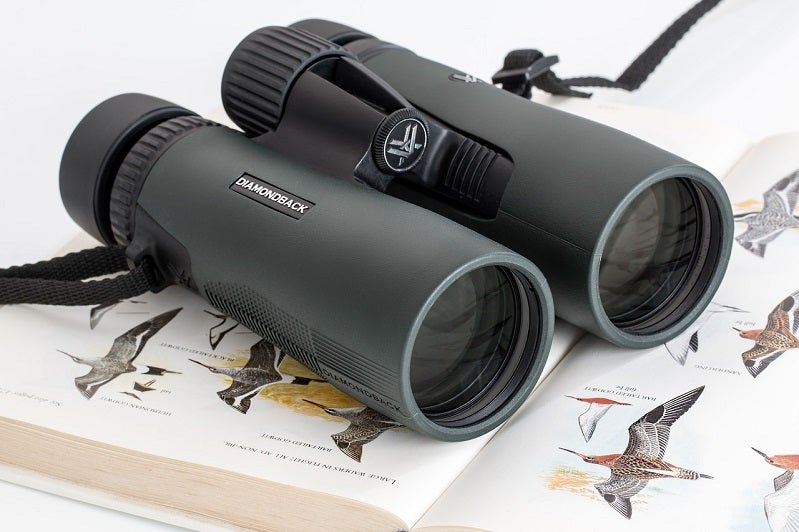
In the following guide, we’ll introduce you to the deciding factors when it comes to picking the best binoculars for birding. We’ll explain the most important numbers of optics and how to make a sensible decision since bigger and larger is not always better.
It helps to have some understanding of the distances at which you’ll be spotting birds, and if you’re looking for a more portable model of a higher-performance pair meant for stationary use with a tripod.
If you are a beginning birder, have a look at our How to Start Birding Guide.
How do you decide which model is best for you?
Bird watching binoculars are available in all price ranges and you can spend well over $1,000 for a pair.
Yet more expensive isn’t always better, and depending on how casual or dedicated your birding is, a budget model might be sufficient for you.
The optics are the most important part, with magnification, field of view and close focus. Other important features are coatings for the lenses and how rugged the model is.
Size & Weight
Weight and dimensions are important as you’ll have to carry and hold your binoculars, or want to fit them into a backpack. These factors will largely be influenced by the material of the body, and by the optics.
Smaller binoculars feature lenses with a diameter in the range of 20mm to 28mm. They’re easier to carrier and wield and are great for travel. Yet smaller lenses mean less light and therefore impaired vision, especially during dusk or dawn.
Standard size birding binoculars might feature lenses of 40mm or 42mm, which are very popular. Some prefer full-sized 50mm binoculars and take the heavier weight in favor of brighter image and wider view.
Optics
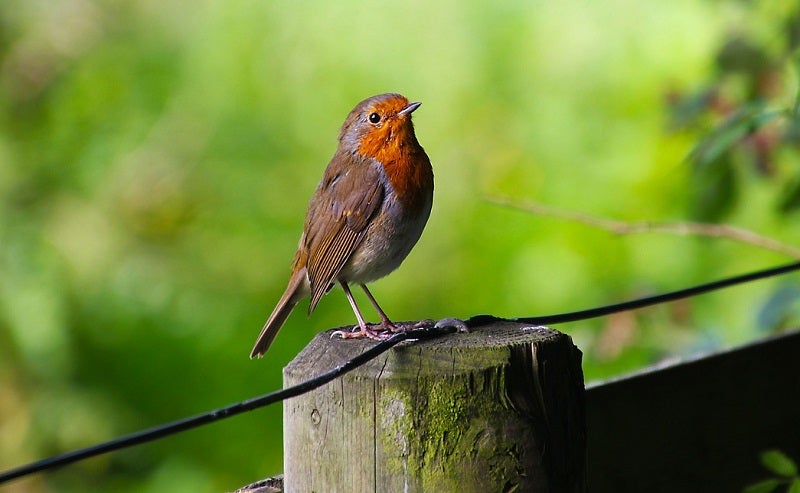
A short lesson in optics: binoculars consist of two aligned telescopes for vision at a distance with both eyes.
They provide the viewer with a three-dimensional image with an impression of depth. Light enters through an objective lens, passes through prisms inside, leaves through the eyepiece and enters your pupil.
The most important numbers for the optics of binoculars are commonly specified like this: 8x40. The first number specifies the magnification power, the second number refers to the diameter of the objective lens.
Magnification
Binoculars are about magnification, enabling you to see distant things up close. It seems logical that a higher magnification is better and you should buy the model with the highest power.
Yet a higher magnification introduces disadvantages: it will narrow the field of view, reduce depth focus and image brightness, and make it harder to get a steady view.
For a magnification power greater than 10x, you generally need a tripod to get a steady image. A popular value is a 8x or 10x zoom for birdwatching.
This gives you a field of view wide enough to spot birds in trees or in a field. You’ll also be able to keep the image steadier than with 12x or 16x magnification.
Objective Lens Size
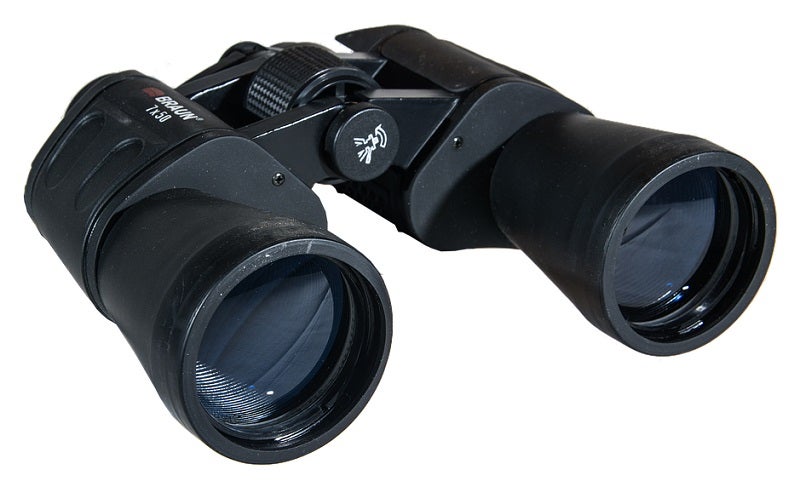 The size of the objective lens specifies the diameter in millimeters. Light enters through the objective, meaning a bigger lens gathers more light, resulting in a brighter image.
The size of the objective lens specifies the diameter in millimeters. Light enters through the objective, meaning a bigger lens gathers more light, resulting in a brighter image.
Yet again, the biggest lens is not always the best way to go. As the size increases, so do bulk, weight, and cost. For a hand-held pair, 50mm are the absolute maximum.
A common rule of thumb for birders is to choose the objective lens size five times larger than the magnification power. Popular combinations are 8x40 or 8x42.
However, due to increased quality in optics and special lens treatment with coatings, you don’t necessarily have to stick to this rule, especially for higher-priced binoculars.
For your standard binoculars, a lens size between 30mm and 50mm is a good choice; anything below 30mm can be considered compact. These are great for travel, but if all you own is a compact pair, your birdwatching experience could be lessened.
Again, the popular sizes of 8x40 and 8x42 offer great compromises between brightness, field of view, and weight.
If you’ll be birding primarily in low-light conditions, that is in dense woods, at dusk or dawn or watching night-active birds such as owls, consider a bigger objective lens for more light gathering capacity.
When increasing the objective lens size, though, keep this in mind: lager lenses are more expensive, and only high-quality ones deliver good results. A solid 40mm lens is more enjoyable than a cheap 50mm lens.
Field Of View

Field of view or FOV for short refers to the width of the image as seen through optics. Birdwatchers generally prefer a wider field of view.
There is an inverse relationship between FOV and magnification: with higher magnification power comes a narrower field of view. On cheap binoculars with a wide FOV, you might notice distortion around the image borders.
A wide enough field of view makes it easier to spot and track birds, especially when they’re moving or hidden in nature. If you can compromise magnification for FOV, it’s a good choice to opt for a wider field of vision.
The FOV can be specified in several ways. An example for “at a distance” would be 300 feet at 1,000 yards. An object in focus 1,000 yards away would therefore have a total image width of 300 feet. An easier reference is the angular FOV or the apparent FOV. An angular field of view could be 6°.
To know the image width in feet, you’d multiply by 52.5: 6 x 52.5 results in 315 feet at 1,000 yards. The apparent field of view is a larger angle and refers to the FOV as it appears to the human eye at magnification.
Lens Coatings
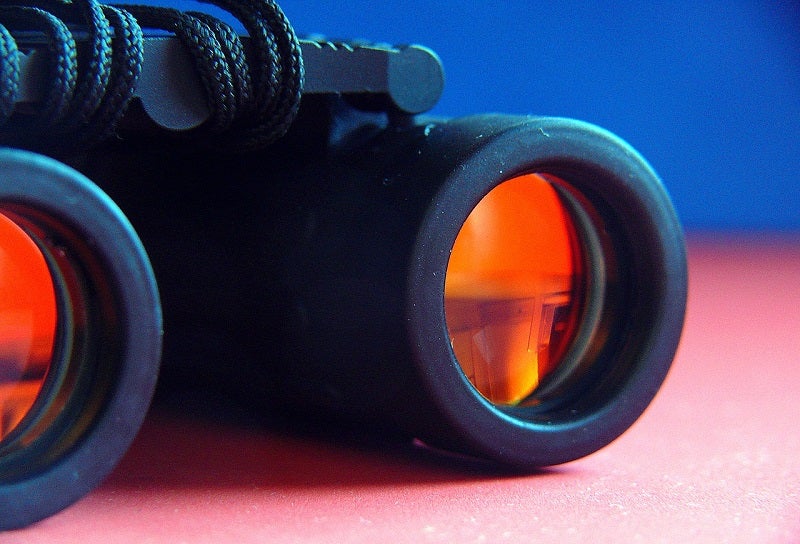
Higher-quality binoculars feature lens coatings. The optics are treated with additional material to increase their performance. Most common is an anti-reflective lens coating to help transmit light and deliver a brighter image.
Without such a coating, up to half of the light that enters through the objective lens can be lost in passing and never make it into the eye of the observer. With this special treatment, it becomes viable to use smaller objective lenses that perform just as well as larger, untreated ones.
With multiple coatings, manufacturers reduce glare and improve contrast. However, the term “coated” at minimum means a single layer on one lens. “Fully coated” specifies all lenses feature at least one layer. “Fully multi-coated” is the best.
Coatings highly influence low-light performance and are a determining factor when light is less than ideal. You will see that manufacturers specify a “twilight factor” for their binoculars as a way of showing how well they perform in dim light – a higher number is better.
This factor is calculated by multiplying magnifying power and objective lens size and taking the square root. A pair of 10x42 binoculars therefore has a twilight factor of 20.5.
However, two models with and without coating will have the same number if the optics are otherwise identical, yet the model with high transmission coating will outperform the one without.
This becomes very apparent with old binoculars from the 40s or 60s or very cheap models, which perform poorly in dim light.
Waterproofing

Most higher-grade birding binoculars can withstand humidity and mild rain. Waterproofed models go further and keep out water and fog with O-ring sealings to be moisture proof.
The sealing or proofing is good to have because it will also keep out dust and dirt. To prevent the lenses from fogging up, good binoculars are gas purged, meaning that inside they feature a dry gas such as Argon or Nitrogen instead of air.
A properly waterproofed and purged pair is resistant to corrosion and will last you longer.
Prism Design
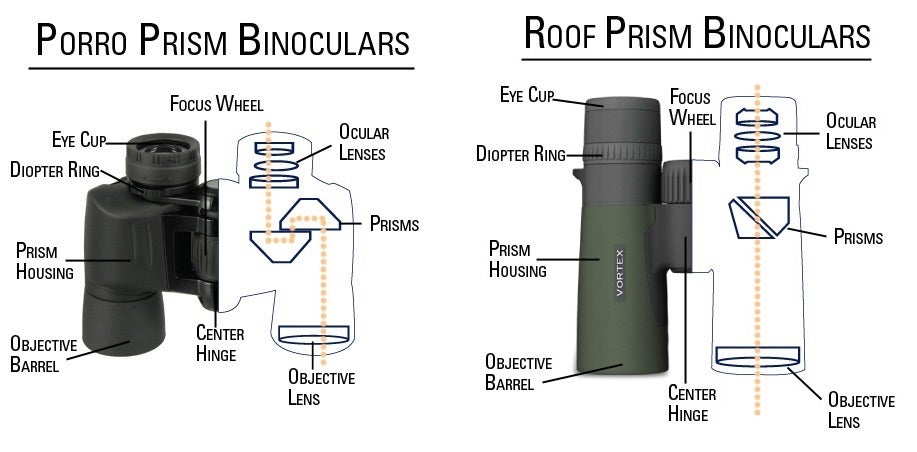
Binoculars feature prisms inside to pass on the light, and there are two different designs: porro prisms and roof prisms. With porro type binoculars, the light path is angled in a Z-shape.
The eyepieces are offset from the objective lenses. The result is a wider pair with the traditional V-shape for binoculars. With porro prisms, binoculars use straight barrels and thus feature an H-shape.
Eyepieces and objective lenses are approximately aligned and the prisms inside overlap closely. This design is more costly, yet it is more durable and easier to seal.
Comparison: Porro vs. Roof Design
| Porro | Roof |
| Bigger & bulkier | Slimmer & smaller |
| Heavier | Lightweight |
| External focus with O-ring means dirt & water can penetrate with degradation | Internal focus for better sealing and waterproofing |
| Wider FOV | Close overlap of prisms means smaller FOV |
| Greater depth perception due to offset lenses | Decreased depth perception due to straight barrels |
| Brighter image because more light can enter | Needs lens coating for equal brightness |
| Two offset prisms are mounted separately, which means shocks and drops can cause misalignment | Two prisms are mounted together, which makes for a stronger and more durable design |
| Cheaper | More expensive |
Misc Binocular Considerations
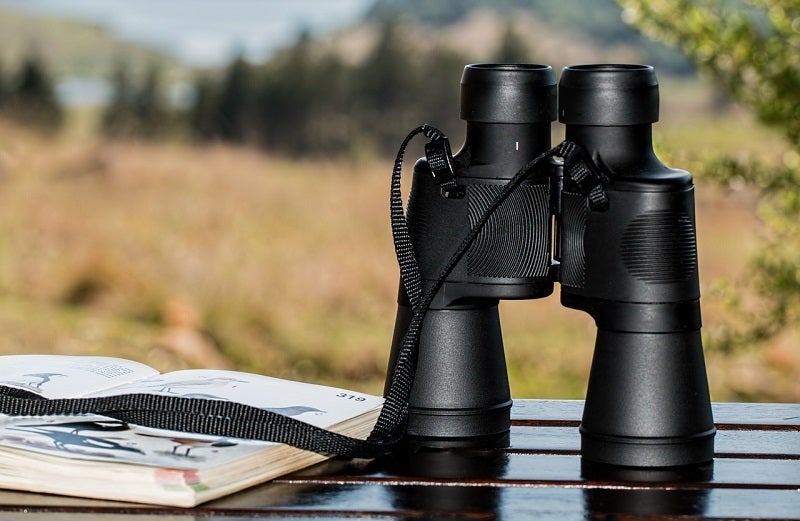
Close Focus
The shortest distance at which binoculars can provide a sharp image is called close focus. As the magnification power increases, so does the close focus. So you’ll have to consider how close you can get to the birds you’ll be observing most.
Commonly, you’ll view them at some distance, but a low close focus guarantees that you can still use your binoculars to look at birds in detail when they’re 15 or even only 10 feet away.
Should you want to observe other wildlife such as butterflies at even closer range through your binoculars, you’ll need a very low close focus distance. Again, close focus is a trade-off with the magnification power of birdwatching binoculars.
Exit Pupil
This term describes the diameter of the image or the dot of light as it comes out of the ocular lens in the eyepiece. A larger exit pupil makes it easier to align the image with the pupil of the eye, especially in low-light conditions.
A smaller exit pupil in daylight is still acceptable. The Exit Pupil is calculated by dividing objective size by magnification power. A 8x42 pair of binoculars therefore has an exit pupil of 5.25mm.
Eye Relief
The exit pupil distance is also called eye relief in order to clearly separate it from the exit pupil diameter described above. This value described the distance between the eye and the eyepiece in which you can still see the image.
With a greater eye relief, the pupil of the human eye can be further from the ocular lens and still see the image comfortable. This becomes important when you want to use glasses with your binoculars.
Again, magnification power plays a role in this, as a larger magnification reduces eye relief. If you’re wearing glasses, you’ll find the eye relief on 8x binoculars more satisfactory than on 10x ones.
FAQs About Birding Binoculars

Q: What is birding and where can you do it?
A: Birdwatching or “birding” means observing wild birds in their natural habitat, identifying species and understanding their habits. In the USA, you can observe more than 800 different bird species.
Birdwatchers use their own backyards and local parks for the activity, or they travel to certain environments such as forests, lakes, nature reserves, national parks or native prairie.
Q: What do the numbers on bird watching binoculars mean?
A: A pair of binoculars typically features a set of numbers, such as 8x42. These stand for the magnification power (8) and the objective size of the binoculars. Magnification signifies how much closer or larger an object will appear.
The objective size is often specified in millimeters and refers to the lens diameter. A larger lens is able to gather more light, resulting in more clarity and brightness, which becomes more noticeable with greater distance.
A specification like 6-10x40 refers to a pair of zoom binoculars with a variable magnification power between 6x and 10x.
Q: Are the binoculars with the highest magnification the best?
A: A common magnification power for birders is 7x, 8x, or 10x. With a high magnification, you can get a closer and more detailed look, but you will be reducing your field of view (FOV).
Birds tend to move, and a narrow field of view makes it more difficult to track them. Any pair of binoculars is always a compromise between magnification and field of view.
Q: What is FOV?
A: FOV stands for field of view and refers to the width of an image when seen through optics. It is commonly specified as width at a distance, such as 300 feet at 1,000 yards, which means a width of 300 feet of an object 1,000 yards away.
An angular field of view is another way to specify the same thing, such as 6° or 15°. A wider field of view means it is easier to find and track objects with less movement of the binoculars. The field of view is inversely proportional to the magnification power.
Q: What are coatings for bird watching binoculars?
A: Birding binoculars can feature coatings for the glass elements to improve the optics. Most commonly, they serve the purpose of increasing the amount of light that is gathered.
With a good coating, it becomes possible to use a smaller size objective and still have sufficient light. A smaller objective results in a lighter and more compact pair of binoculars.
Further coatings help improve contrast, reduce glare and protect the material. “Fully coated” means that all lenses in the optical system have at least one layer of coating.
Q: What is the difference between porro- and roof-prism binoculars?
A: Traditional looking binoculars are porro type and have an angled light path inside. Roof prism binoculars feature a straight barrel that does not angle the light path. They’re more compact, more difficult to construct and therefore more expensive.
Q: Why are zoom binoculars not as suitable for birdwatching?
A: You might wonder why birding binoculars commonly feature a fixed magnification power. Zoom binoculars have optics with a variable magnification, say 6x to 10x or 8x to 12x.
This is achieved by changing the distance between lenses. However, as you increase this distance, the focal length, the amount of light passed on to the human eye gets less and less, resulting in a darker and blurrier image at high magnification.
Zoom binoculars also feature a smaller field of vision, making them less useful for birdwatching.
Q: Can I use birding binoculars with glasses?
A: If you are near- or far-sighted, you can use the focusing mechanism to properly adjust the binoculars for your eyes.
People with astigmatism or other eye afflictions tend to prefer binoculars with a larger eye relief, which is the optimum distance between the ocular lenses and your eyes.
These binoculars are called long eye relief or high eye-point optics. In addition, rubber eyecups than can be rolled down or adjusted might further help you.
Q: How do I clean my birding binoculars?
A: Always consult the owner’s manual for specific care instructions, especially in the case of coated binoculars, and make sure to follow instructions.
Cleaning generally involves gently cleaning or brushing off dust, then cleaning the lenses with a lens cloth and possibly special cleaning fluid suitable for the specific model. The outer material can be cleaned with a soft cloth.
Always take extra precaution not to scratch the optics. You should not take apart your binoculars as you’ll most likely damage them. Anti-fogging models are nitrogen-filled.
If you think there is foreign matter inside of the optics, contact the manufacturer or a local dealer.
Q: What other equipment do I need?
A: A proper binocular cleaning kit is great to have. If your model didn’t come with a case, you should consider a protective casing to prevent damage or scratches.
For extended stationary sessions or larger, heavier birding binoculars, a tripod can be useful. Mounting your binoculars onto a standard tripod commonly requires and L-shaped adapter.
Q: What are the best binoculars for bird watching?
A: It depends on your budget. If you can afford the extra money, Zeiss and Leica are world renowned for the quality of their optics. However, most of them cost over $1,000. Probably the best bang for your buck would be with the Vortex Optics or the Nikons.
Q: What is the best magnification with binoculars?
A: There is no single answer to this question. Here are a few things to keep in mind. If you will not be able to get close up to your subject, a higher magnification is better like 10x or 12x. Keep in mind the higher the magnification the more “shake” you will get and a tripod will help out greatly. If you are just looking out your back window at a bird feeder, a 6 or 8x magnification should be sufficient.
Birding For Beginners – Tips to Get Started
Conclusion
We have not reviewed any birdwatching binoculars below $50 as the savings do not warrant the low glass quality you’ll get at such a price. You won’t enjoy your birdwatching experience with these optics.
Instead, consider your budget, use our guide above to identify the features that are most important to you, such as magnifying power or field of view, then select among our top models. Enjoy your outdoor time and happy spotting!
How We Researched
To come up with the top birdwatching binoculars we researched a variety of sources for reviews such as REI, Dicks Sporting Goods and Bass Pro Shops along with our own personal experience.
We also consulted online magazines for product research and reviews to get as much unbiased information as we could. To help weed out fake reviews we used Fakespot.com to make sure we only looked at genuine reviews.
With so much quality gear available, we had to narrow it down based on what we felt were the best options for the price. The staff authors are avid photographers and birders.
To help narrow down the selection our authors used their personal experience along with recommendations from fellow hikers, photographers and birders.
After extensive research, we came up with our list to help you choose the right one for you.
Sources
I hope this guide was helpful for finding a good pair of bird watching binoculars to fit your needs. If you want to comment or recommend a pair of binoculars I didn’t include, please use my contact form to get in touch.

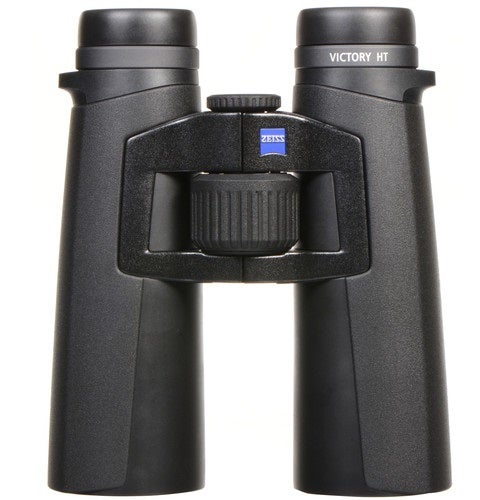
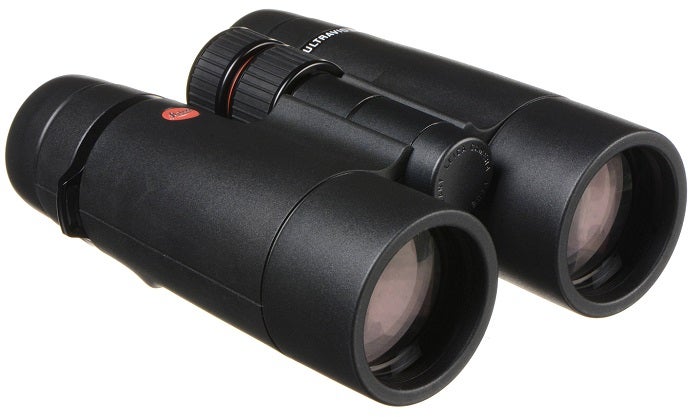
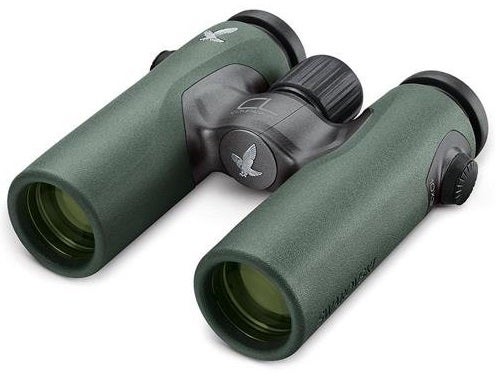
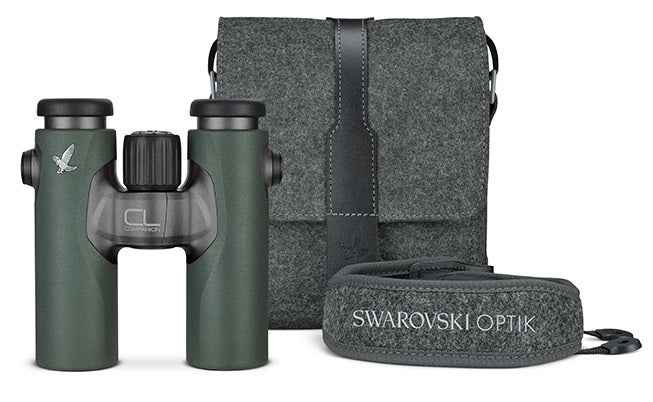
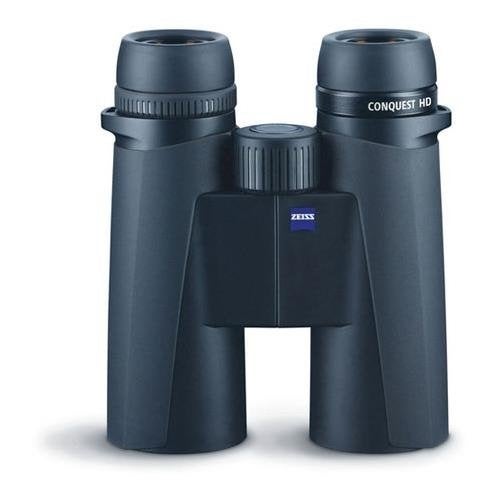
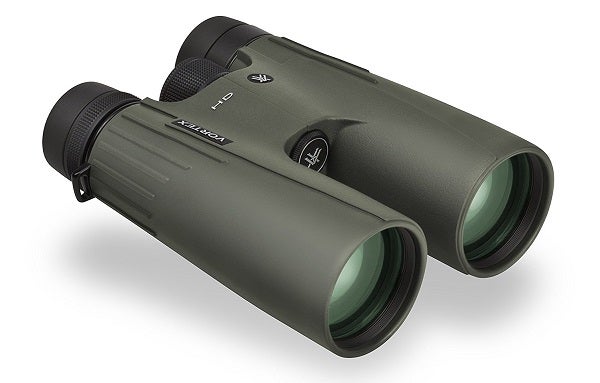
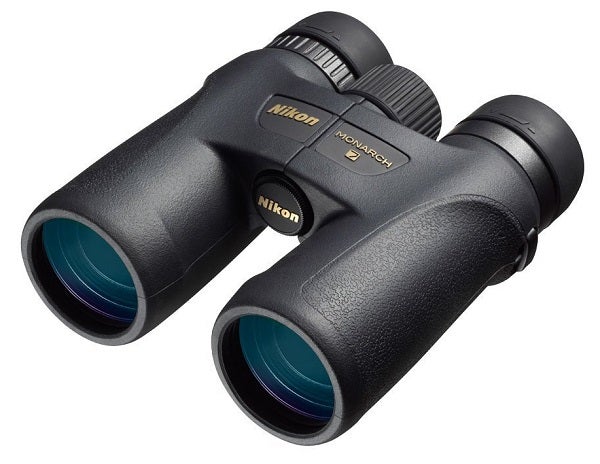
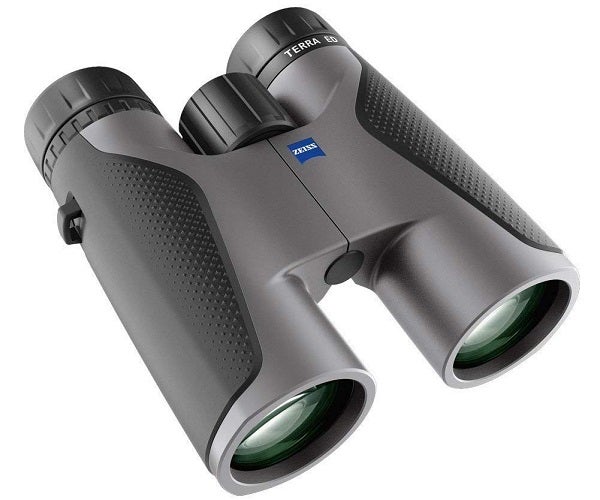
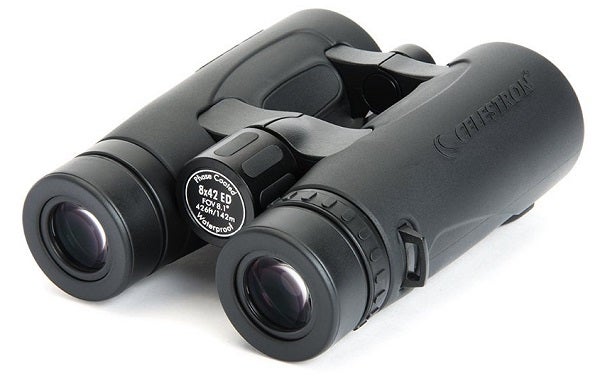
I am planning to buy Celestron binocular this one kindly help me out is it good for the Birding and hunting?
Celestron Trailseeker 8×42
Specifications
8x magnification
42 mm objectives
25 mm exit pupil diameter
17 mm eye relief
Fully multi-coated (FMC) optics
28 relative brightness
BaK-4 prisms with phase and dielectric coatings
8.1 degrees field of view
Limited lifetime warranty
Weight 1.45 pounds
Celestron is one of my favorite brands, I think it will serve you well for birdwatching, hunting and general use.
Rich
Of course, different binoculars produce different level of sharpness, so a buyer should carefully consider the kind of images he or she will be able to obtain through use of the binoculars.